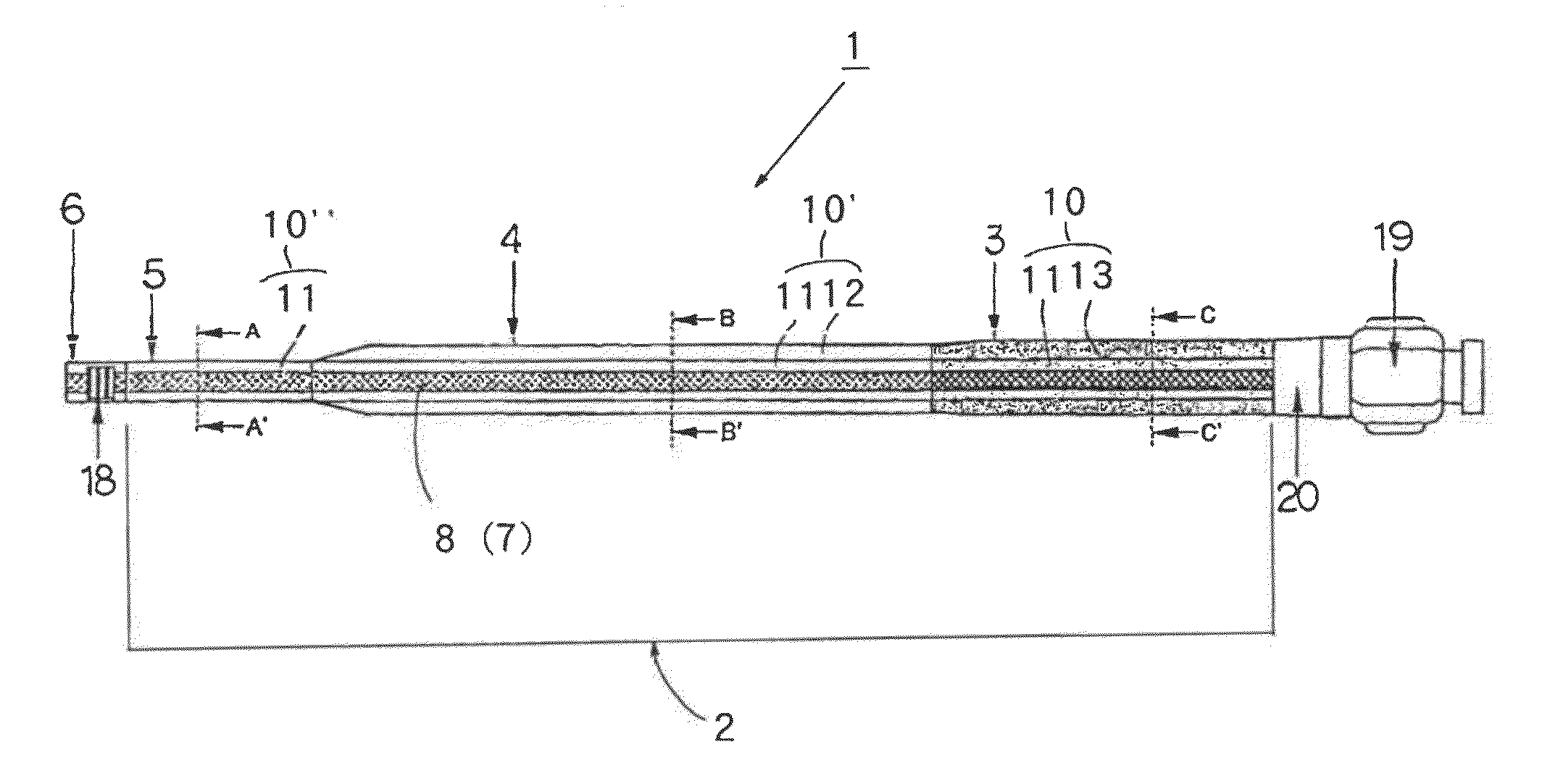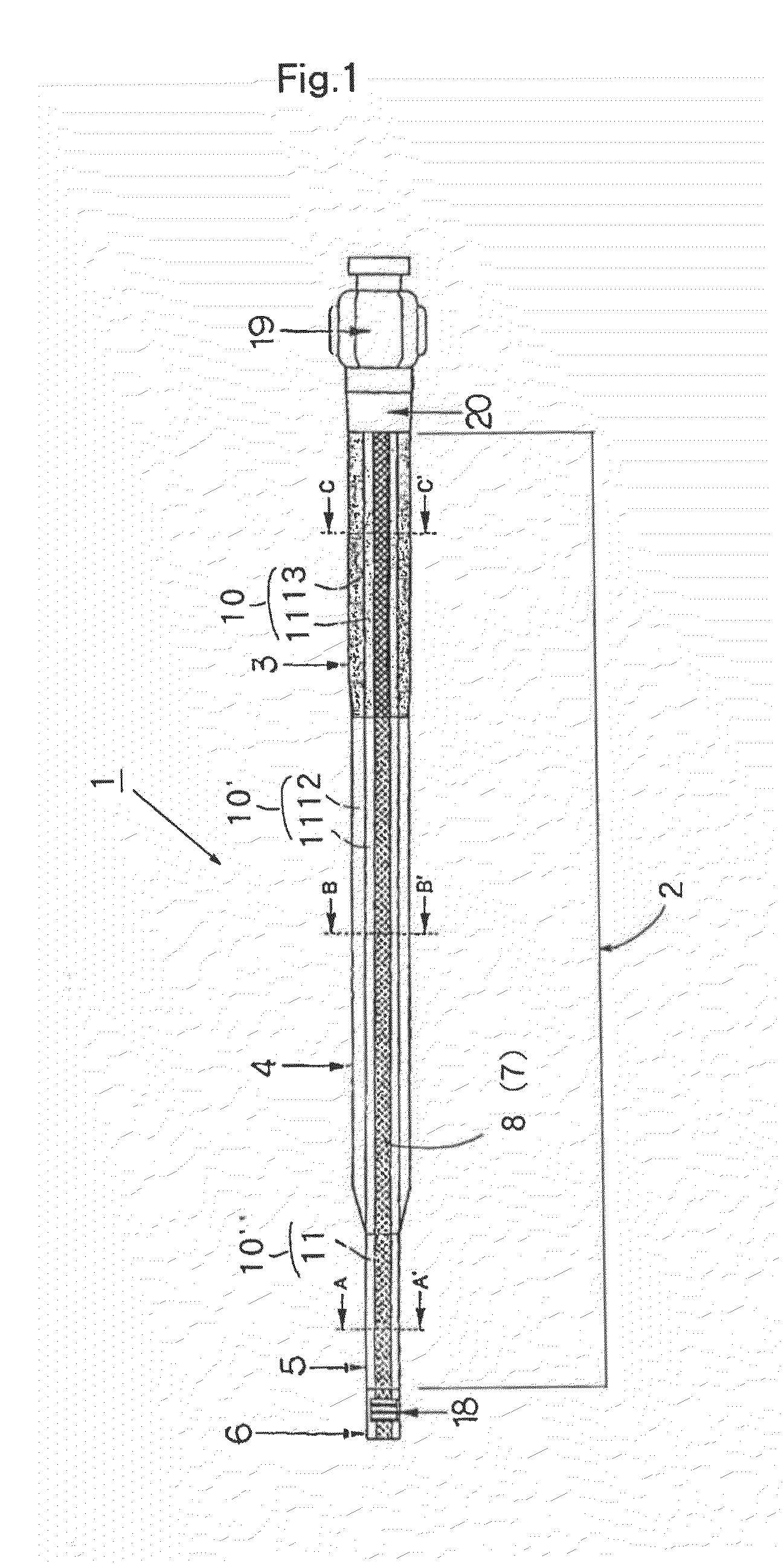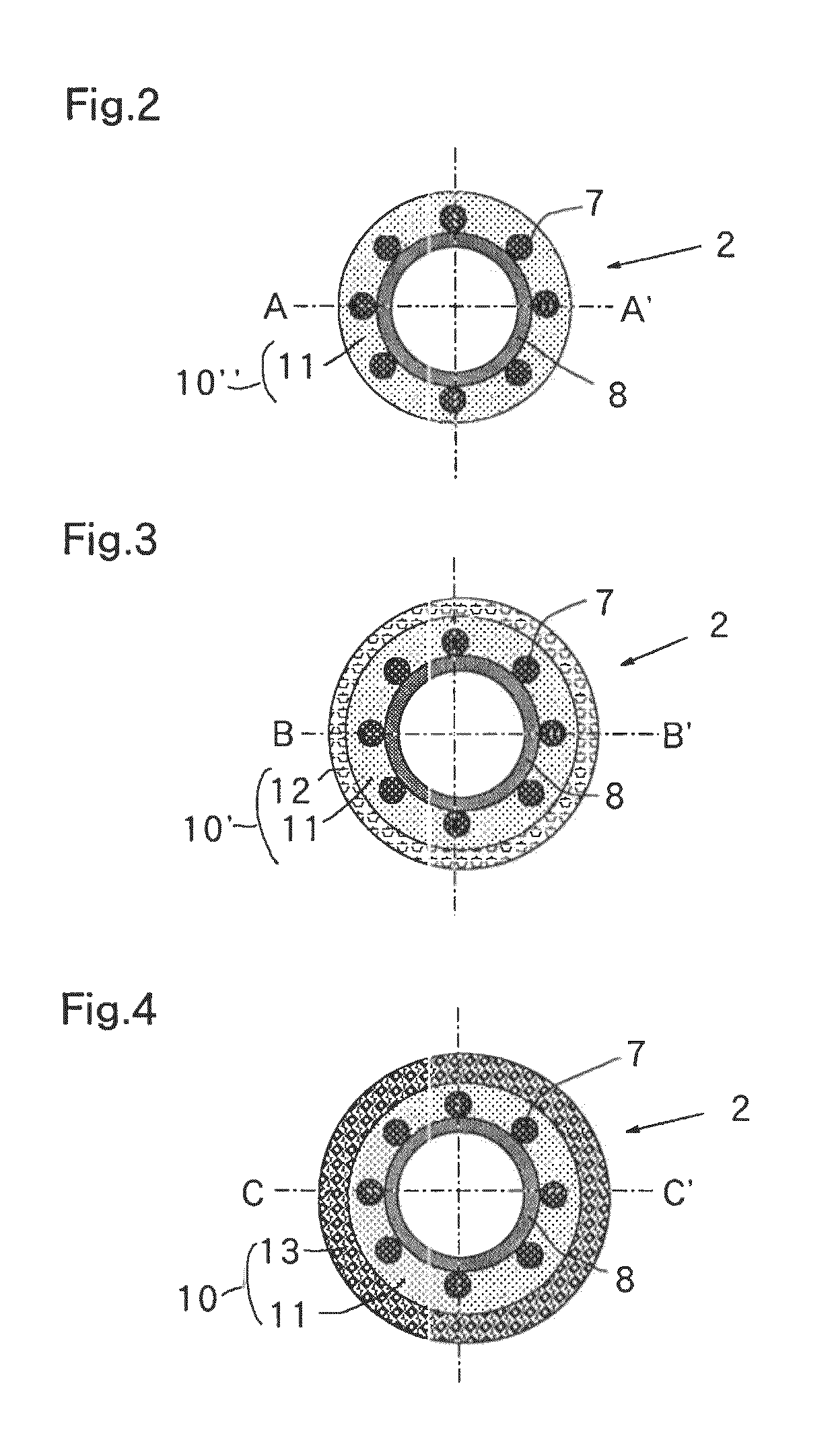Microcatheter
a micro-catheter and catheter technology, applied in the direction of catheters, coatings, etc., can solve the problems of insufficient flow in the lumen, tube bending or twisted at various sites along the entire length of the catheter, and the diameter of the near end side at hand is too small, so as to improve the anti-kinking property, improve the pressure resistance, and improve the effect of approach or access
- Summary
- Abstract
- Description
- Claims
- Application Information
AI Technical Summary
Benefits of technology
Problems solved by technology
Method used
Image
Examples
example 1
[0066]A shaft tube 2 that was formed of a multilayered tube for a microcatheter and that had a layer structure shown in Table 1 was produced as follows.
[0067]Sixteen stainless steel wires having a diameter of 0.03 mm each were braided on a PE tube that was employed for an inner layer 8 and that had a resin thickness of 0.015 mm and an internal diameter of 0.56 mm, to coat or cover the outer surface thereof. A first outer layer 11, a second outer layer 12 and a third outer layer 13 were formed thereon by a simultaneous multilayer melt-extrusion with a multilayer extrusion molding machine having a ring die.
[0068]A polyamide elastomer (hardness 55 D) was used as a resin for the first outer layer 11, a polyamide elastomer (hardness 63 D), as a resin for the second outer layer 12, and a polyamide elastomer (hardness 77 D), as a resin for the third outer layer 13. The shaft tube 2 having a distal zone 5 with an outer diameter of 0.73 mm, an intermediate zone 4 with an outer diameter of 0....
example 2
[0076]A shaft tube 2 that was formed of a multilayered tube for a microcatheter and that had a layer structure shown in Table 1 was produced as follows.
[0077]Sixteen stainless steel wires having a diameter of 0.03 mm each were braided on a PTFE tube that was employed for an inner layer 8 and that had a resin thickness of 0.006 mm and an internal diameter of 0.56 mm, to coat or cover the outer surface thereof. A first outer layer 11, a second outer layer 12 and a third outer layer 13 were formed thereon by a simultaneous multilayer melt-extrusion with a multilayer extrusion molding machine having a ring die.
[0078]A polyamide elastomer (hardness 35 D) was used as a resin for the first outer layer 11, a polyamide elastomer (hardness 63 D), as a resin for the second outer layer 12, and nylon 12 (hardness 77 D), as a resin for the third outer layer 13. The shaft tube having a distal zone 5 with an outer diameter of 0.73 mm, an intermediate zone 4 with an outer diameter of 0.85 mm and a p...
PUM
| Property | Measurement | Unit |
|---|---|---|
| thickness | aaaaa | aaaaa |
| diameter | aaaaa | aaaaa |
| size | aaaaa | aaaaa |
Abstract
Description
Claims
Application Information
 Login to View More
Login to View More - R&D
- Intellectual Property
- Life Sciences
- Materials
- Tech Scout
- Unparalleled Data Quality
- Higher Quality Content
- 60% Fewer Hallucinations
Browse by: Latest US Patents, China's latest patents, Technical Efficacy Thesaurus, Application Domain, Technology Topic, Popular Technical Reports.
© 2025 PatSnap. All rights reserved.Legal|Privacy policy|Modern Slavery Act Transparency Statement|Sitemap|About US| Contact US: help@patsnap.com



